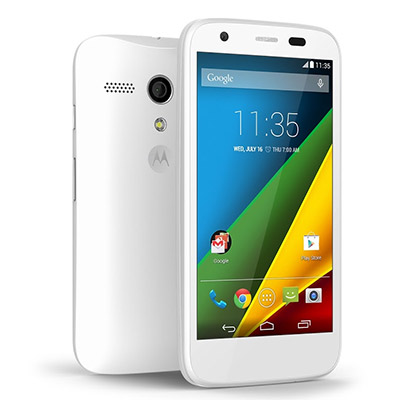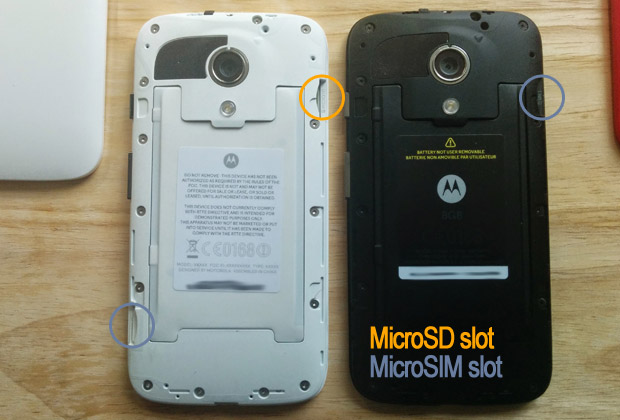 Introduction
Introduction
Motorola unveiled the Moto G back in November 2013. Unlike most entry-level smartphones, the Moto G struck a balance between current hardware and a price that remained affordable and delivered on its promise to offer “premium experience with today’s technology.” The Motorola G was well received by both critics and consumers and went on to become Motorola’s best-selling smartphone ever (selling over 150,000 in Canada alone). Last month, Motorola unveiled a new version of the Moto G. Called the Moto G with 4G LTE, it addresses two areas that we pointed out as weaknesses of the original model, storage and connectivity.
We loved what Motorola tried (and in many ways succeeded) to do with the original Moto G. The improvements should make an already compelling entry-level smartphone an even better choice for anyone looking for a smartphone that is wallet-friendly. With that in mind, we took it for a spin to see if it would live to our raised expectations.
Specifications
- Processor: Quad-core (1.2GHz × 4) Qualcomm Snapdragon 400
- Operating system: Google Android 4.4.2 KitKat
- Cellular connectivity: LTE/HSPA+ (21Mbps)
- Other connectivity: GPS/GLONASS, 802.11 b/g/n Wi-Fi, Bluetooth 4.0
- Display: 4.5-inch HD (720×1280/329PPI)
- RAM: 1GB
- Internal storage: 8GB/16GB
- External storage: MicroSD cards up to 32GB
- Rear-facing camera: 5MP with LED flash and 720p HD video capture (30fps)
- Front-facing camera: 1.3MP with 720p HD video capture (30fps)
- Connectors: 3.5mm audio jack, micro-USB
- Battery: Non-removeable 2,070mAh
- Dimensions: 129.9 × 65.9 × 6.0 to 11.6 (due to curvature) millimeters
- Weight: 143 grams
- Colors: Black, White
- Other: FM radio, waterproof coating, 65GB of Google Drive storage
If you compare the specifications of the Moto G with 4G LTE, you’ll notice that only two things have changed: Motorola has added LTE connectivity and a microSD card slot.
On the outside, nothing has really changed. This means that the Moto G with 4G LTE will work with all of the different back plates that Motorola first introduced with the Moto G. It also means that performance will be on par thanks to the Qualcomm Snapdragon 400 processor and that battery life will get you through the day without scrambling for an outlet at some point.
In the images below, the Moto G with 4G LTE is on the left while the Moto G (in red) is on the right:
- Back view
- Front view
- Side view
Under the cover, things are slightly different:

The microSIM slot has moved from the top right on the Moto G to the bottom left on the Moto G with 4G LTE. In its place is now the microSD slot.
As mentioned above, the fact that the Moto G with 4G LTE is identical to the Moto G on the outside means that accessories designed for the Moto G will also work for it without issue. Here is the Moto G with 4G LTE with a Motorola Flipshell:
Using the Moto G with 4G LTE
Like the original Moto G, the Moto G with 4G LTE is a well made and solid device. The specifications are still nowhere near cutting edge and are slightly older but are more than enough for most typical apps and your casual games such as Temple Run 2 and Threes.
Having LTE makes certain higher bandwidth functions a joy to use. Video streaming, video calls, downloading large files and app updates are all a breeze now, especially with Rogers LTE speeds consistently above 50Mbps in my area (I wish I could say the same for my regular provider).
Despite the changes that Google has made to how storage cards can be used in Android 4.4 KitKat, the additional storage is welcome. While storage was less of an issue on the 16GB model, it certainly proved far more of a limitation on the 8GB model. The addition of the microSD card slot now alleviates some of the app shuffling that you may have to do by allowing you to move some files over to the card.
Conclusions
The addition of LTE and the microSD card slot have made the Moto G an even better choice for anyone looking for an inexpensive but well made smartphone. The new features do mean that the Moto G with 4G LTE is somewhat more expensive than the Moto G unfortunately. Whether this additional cost is worth it to you will depend on how you use your Moto G. If you don’t use much data, it may not be worth the additional expense but if you do, it’s well worth your consideration. Whichever you decide on, you will get a solidly built device that offers better specifications and more importantly performance than many similarly priced devices currently on the market.
Where to get the Moto G with 4G LTE
The Moto G with 4G LTE will launch in Canada on June 17 with Rogers Wireless and Fido. Rogers will offer it for free with a two-year contract or CA$224.99 outright. Fido will offer it for CA$50 with a standard plan or free with a smart plan.



